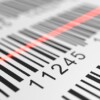
Interviews with ITSA Members 2023 – Common Threads and Differences
1 Feb 2024 | Interviews, Press Releases
Last year, we launched a series of interviews with International Tax Stamp Association (ITSA) members to collect personal insights into the advances, challenges and possible future developments shaping the tax stamp industry’s evolution.
In this article, we look back at common threads that emerged and where opinions differed, considering how far the industry has come from its roots, where it stands today, and likely trends to emerge in 2024 and beyond.
Common threads
- Evolution of tax stamps: all interviewees acknowledged the significant evolution of tax stamps from simple labels to sophisticated, high-tech products. The expanded use of advanced security features and track and trace systems was highlighted as a particularly important development.
‘Over the years, the complexity of tax stamps has changed from being a simple label to a sophisticated product that now has something closer to the intricacy of a banknote’ – Erwin Wagner, Baldwin Technology Company.
- Role in revenue collection: across the interviews, a unanimous recognition of tax stamps as crucial tools for effective revenue collection and regulation emerged. It was also noted that the integration of digital technologies and track and trace has enhanced transparency, making it more difficult for counterfeiters to operate, with benefits for revenue authorities and end-users alike.
‘The security features of our stamps increase consumer confidence in purchasing excisable products since their authenticity is easy to verify’ – Jaime H Aldaba Jr, APO Production Unit.
- Industry collaboration: the importance of international cooperation and the introduction of standards in the tax stamp industry was emphasised by several interviewees, highlighting the value of exchanging expertise, collaborating on standards, and implementing effective anti-counterfeiting measures. There was also a general feeling that countries currently lacking tax stamp programmes stood to gain much from implementing them, guided by international standards.
‘More countries should launch tax stamp programmes in line with their present technical capabilities. This would bring added value in the form of tax revenue, transparency, prevention of illicit trade and improved duty of care to the public’ – Thomas Brücklmeier, LEONHARD KURZ.
- Digital transformation: the integration of digital components and the potential for a global track and trace system were recurring themes, pointing to the increasing importance of digital solutions – including mobile apps and unique identification codes – for efficient authentication, traceability, and interoperability.
‘These days we have digital fingerprints like invisible QR codes that couldn’t even have been imagined in the early days of tax stamps’ – Hunia Hassan, NASPS.
- Shared challenges: counterfeiting emerged as a common challenge, necessitating continuous innovation to stay ahead of determined criminal enterprises. The upfront investment required for tax stamp programmes was also mentioned as being an obstacle for some authorities, as were the difficulties of writing and introducing standards that will serve all parts of the value chain and ensure a level playing field for every company involved.
‘We would like to see more clarity, transparency, and interoperability between different tax stamp programmes internationally’ – Andrius Lukoševičius and Karolis Andriuškevičius, Garsu Pasaulis.
- Standards development: the role of standards in shaping the industry and ensuring consistent quality and security was acknowledged by all. ISO 22382:2018, was singled out for appreciation thanks to the valuable guidance it provides for the development of both national and international regulations.
‘ISO 22382:2018 provides procedures, rules and guidelines that are crucial for revenue authorities wishing to implement tax stamp programmes’ – G P Pathak, Uflex Ltd.
Differing opinions
- Technology integration: while interviewees agreed better integration of technology at different levels of the value chain was important, opinions differed on the best approach to achieving it. Some interviewees felt it should begin at the manufacturer level, while others placed the onus on standardisation that would introduce it simultaneously throughout the industry.
- Global track and trace systems: interviewees were united in their excitement over the potential of track and trace systems, though their visions of how these could be implemented varied.
APO proposed a worldwide digital system that would allow immediate identification of genuine products, while LEONHARD KURZ suggested the addition of optical security elements to support countries with developing digital infrastructure. ANY Security Printing, meanwhile, focused on the great potential for tax stamps to feed into big data, providing insights into the global economy that could improve resource efficiency.
‘If we look at major industries such as agriculture or mining, we can go right back to raw materials and follow their course through manufacturing processes into shops and right through to products in customers’ hands. With that level of understanding, we can assess how we are using these resources – how efficient, or not, we are being with them – and that has implications for one of the most serious issues we face today: climate change’ – Gábor Zsámboki, ANY Security Printing Company.
- Serial numbers and barcodes: while some companies are already looking ahead to digital solutions, others stress the continued importance of physical tax stamp elements.
Baldwin Technology would like to see greater consideration given to space around serial numbers and barcodes at the design stage to improve readability, and Luminescence Sun Chemical Security saw potential for ‘hidden layers’ that would capitalise on the limited amount of space available.
‘A barcode can be authenticated simply by using a handheld device like a smartphone… preferably, though, there should be deeper security elements, such as a ‘hidden barcode’ that requires special equipment to read, or fluorescent or magnetic inks. Given the relatively limited real estate offered by most tax stamps, it’s important to have these multiple levels of security to provide the strongest protection against forgeries’ – Gerben van Wijk, Luminescence Sun Chemical Security.
Anticipated future developments
- Advanced security features: the continuous development of new security features and methods of applying them to tax stamps is likely to remain a driving force in the industry, with increased integration of optical effects and more distinguishable security features foreseen to combat counterfeiting.
‘At the moment, state-of-the-art security requires a physical tax stamp, but I see possible paths to increasing the security level of direct printing, making that more applicable to higher value products in the future’ – Tim Driscoll, Authentix.
- Increased lifecycle data: the expectation of more detailed lifecycle data being integrated into tax stamps was a common thread. The ability to record and trace a product’s complete lifecycle offers clear benefits to authorities, manufacturers, and consumers alike, with potential for reducing wastage during production – as highlighted by ANY Security Printing – and empowering end users to make better-informed purchasing decisions.
- Innovation: continuous innovation in the style and sophistication of tax stamps –integrating the latest, cutting-edge technologies – was identified as a remarkable aspect of the tax stamp industry that will persist throughout this year and into the future.
Growing from simple physical stamps into high-tech products with advanced digital features and supporting systems, tax stamps are distinguished by rapid evolution, keeping up with changing market demands and staying ahead of counterfeiters.
‘We create innovative solutions to issues, and ultimately, in applying them, we see positive results. For example, we can help governments contend with counterfeiting and smuggling – which can be particularly impactful in lower income countries, where money can then be redirected towards social and infrastructure projects – and that makes me feel we’re doing some good’ – Ruggero Milanese, SICPA.
Overall, our 2023 interviews paint a picture of a dynamic industry in which developments occur in parallel, with physical and digital elements working in concert to create ever-more secure and sophisticated solutions.
We look forward to exploring these topics further with other ITSA members in the coming months, and anticipate the industry being shaped by continued innovation, an ongoing commitment to combatting counterfeiters, and increased collaboration and standardisation.








